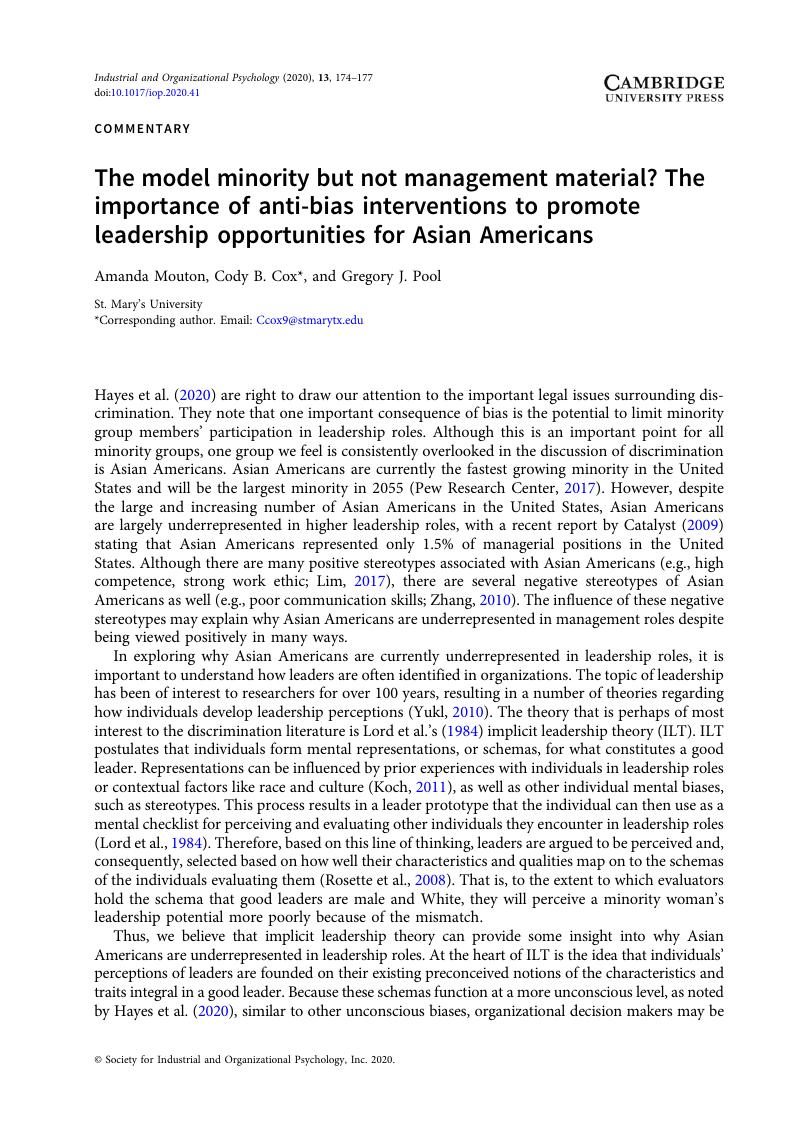Crossref Citations
This article has been cited by the following publications. This list is generated based on data provided by Crossref.
Litam, Stacey Diane Arañez
and
Chan, Christian D.
2021.
Breaking the Bamboo Ceiling: Practical Strategies for Asian American and Pacific Islander Counselor Educators.
Counselor Education and Supervision,
Vol. 60,
Issue. 3,
p.
174.
Samuel, Anita
Soh, Michael Y
Durning, Steven J
Cervero, Ronald M
and
Chen, H Carrie
2023.
Parity representation in leadership positions in academic medicine: a decade of persistent under-representation of women and Asian faculty.
BMJ Leader,
Vol. 7,
Issue. Suppl 2,
p.
e000804.
Lewis, Gregory B.
and
Han, Esther
2024.
A Model Minority? Asian-White Differences in Federal Careers.
The American Review of Public Administration,
Vol. 54,
Issue. 5,
p.
447.





